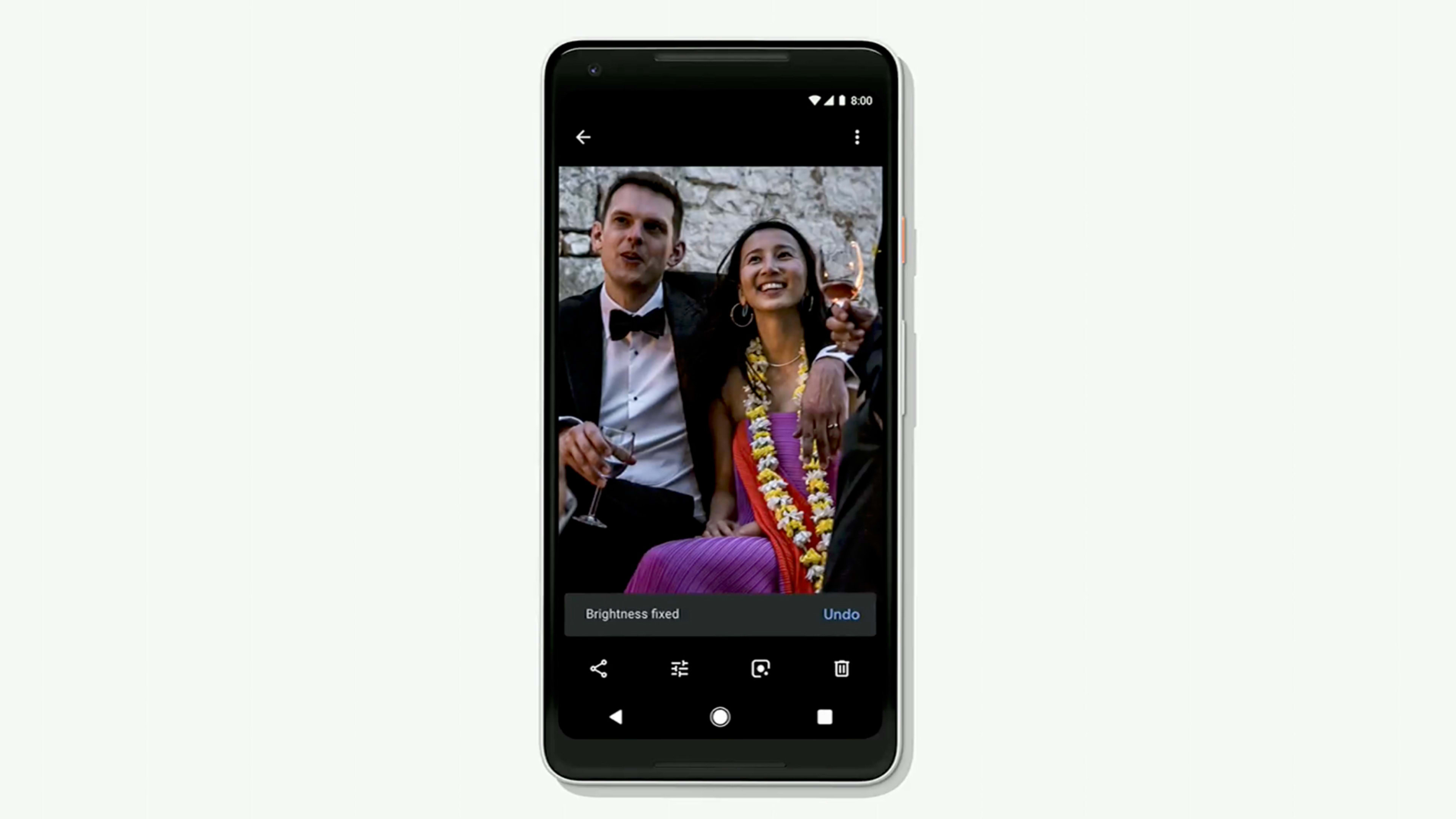During the portion of yesterday’s Google I/O keynote devoted to Google Photos, the niftiest single moment was when the app recolored a black-and-white photo, intelligently making the grass green and applying an appropriate wood tone to a piece of outdoor seating. I knew that the AI behind this feature involved a major investment of time and effort: I first saw an early version of it back in the fall of 2016, when I was working on a profile of CEO Sundar Pichai and got to sit in on the meeting at which the Google Photos team demonstrated it to him for the first time.
Other new Google Photos features also leverage AI: For instance, it can now figure out that you’ve snapped a photo of a document and respond by creating a PDF of it, or remove the color from a photo’s background so the person in the foreground pops. But when I chatted with Google VP Anil Sabharwal at I/O about Photos’ update, we ended up talking less about AI than the fact that the app’s interface increasingly makes suggestions about things you might want to do when you’re looking at a photo, rather than expecting you to hunt down functionality buried elsewhere.
“The number one thing people do in our app is look at a photo, whether it’s one they’ve taken or one that’s been shared with them,” says Sabharwal, quoting a new stat which says that Google Photos users view 8 billion images a day. So when the company was planning the update, it formed an overarching goal: “Thematically, let’s focus on new capabilities but bring them to where people are.”
A similar thought process informed the development of a new API which will let third-party apps and services hook into Google Photos to do things like grab receipts for expense reports, choose pictures to display in a photo frame, or add scanned family photos to your Google Photos repository. “People want to access their content in different experiences,” says Sabharwal. Some of those experiences are most logically built by companies other than Google—and the API will let those companies bring Google Photos right into their creations.
Recognize your brand’s excellence by applying to this year’s Brands That Matter Awards before the early-rate deadline, May 3.
